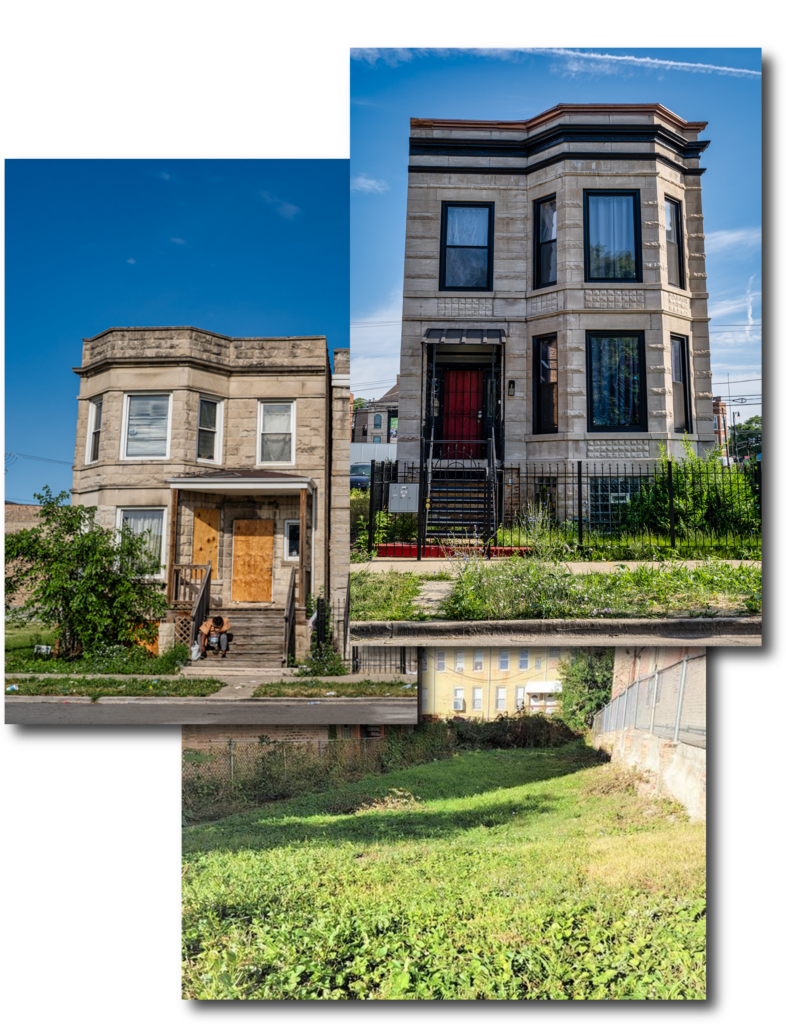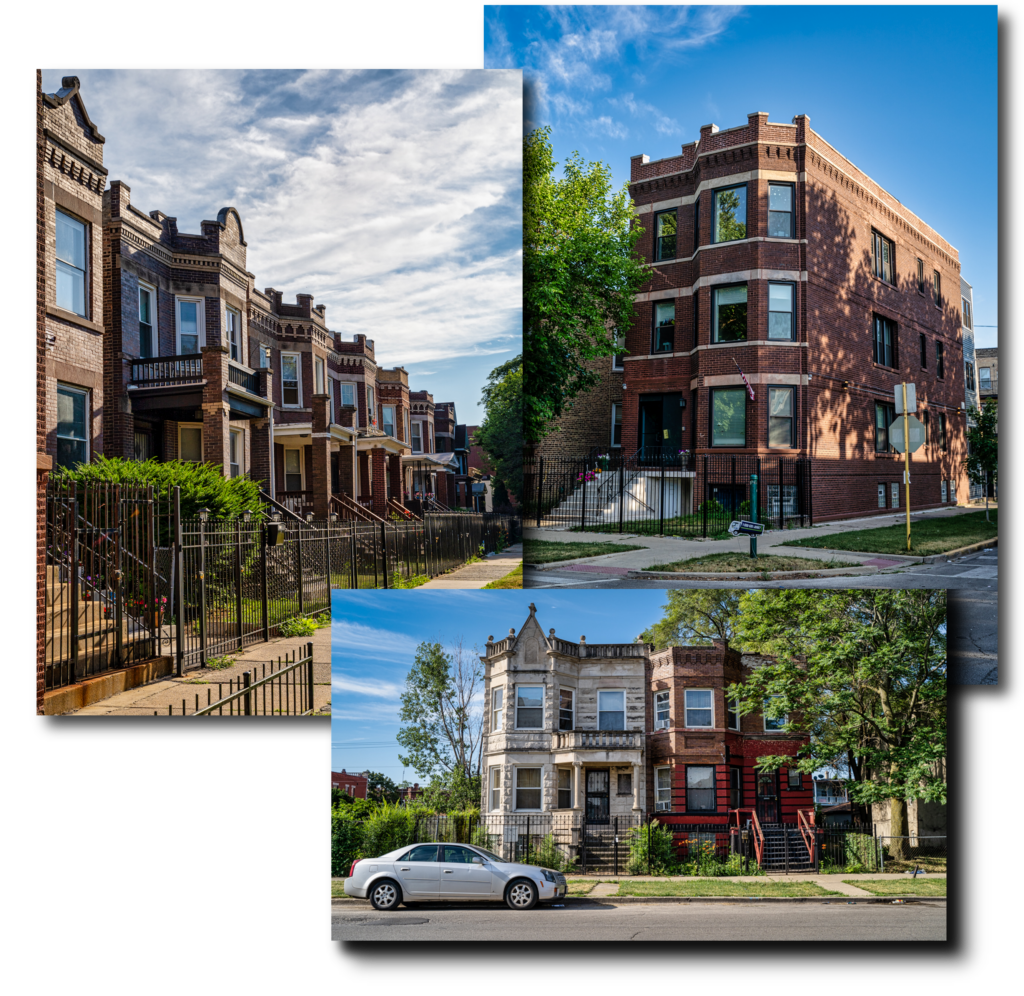THE PROBLEM: CHICAGO’S VANISHING TWO- TO FOUR-FLATS
Chicago’s two- to four-flats are a vital part of the city’s housing stock. These buildings contain 30% of all housing units in the city, serve as the primary source of housing for low- to moderate-income families, and are typically owned by a Black or Hispanic/Latino head of household. However, Chicago’s two- to four-flats are in distress. In high-cost and gentrifying neighborhoods, these buildings are being converted to single family homes, often at the hands of well-capitalized real estate investors. In many other neighborhoods, these buildings are being lost to foreclosure, demolition, and abandonment. These dynamics exacerbate what was already an affordable housing crisis in the city and drain wealth-generating assets from Black and Brown communities. The coronavirus pandemic was an inflection point that has since intensified these challenges. Without action, Chicago’s vulnerable renters will be displaced, racial inequities will widen, and residential segregation will intensify.
34%
of units renting for under $900 in Chicago are in two- to four-flats—more than any other building type.
11,775
units in two- to four-flats lost from 2013 to 2019.
119,435
affordable unit deficit in Chicago as of 2021.
Data from the Institute for Housing Studies at DePaul University.


OUR SOLUTION
Coordinated action and proactive solutions are necessary to preserve Chicago’s two- to four-flats. The Chicago Flats Initiative brings together community members and key stakeholders to develop data-informed strategies for building preservation, drive public and private capital for the acquisition and rehabilitation of properties, provide services that promote financial stability and wealth building for tenants and property owners, and advocate for policies that prevent displacement and expand homeownership opportunities for and in communities of color.